The MGA With An Attitude
REPAIRING FLOORBOARD CAPTIVE NUTS - FR-111
At 01:32 PM 1/22/05 -0800, MICHAEL JONES wrote:
"Help.....has anyone installed weld nuts on the frame for the wooden floorboards? .... as I removed them because of stuck screws, I found they were neatly welded to the floorboard support angles. Too neatly to be simply tack welded. ....
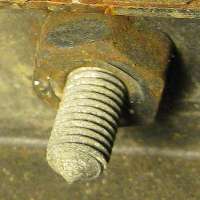
These are weld nuts, originally resistance welded in place. The nut has a male pilot diameter with a shoulder and fits in a punched hole in the frame for location. Around the edges of the nut on the shoulder side there are at least three small protrusions (sometimes more). Squeeze the parts firmly together and pass a high current through it, and the nut is effectively spot welded to the frame rail at these points. The weld is almost invisible, even when new. This is called piloted projection welding.
 For a catalog listing and picture, start with McMaster-Carr here:
For a catalog listing and picture, start with McMaster-Carr here:
 www.mcmaster.com
www.mcmaster.com
In the search box type "weld nut" and click on "Find".
Then click on "Nuts".
Then click on "Weld Nuts".
Then click on "With pilot projection"
www.mcmaster.com/weld-nuts/steel-hex-weld-nuts-9
Original parts were 1/4-28 fine thread hex pattern; see McMasrer-Carr part number 93560A230. If you have a spot welder you can probably rig a pressure head to install these same as original, and much quicker than tack welding each one by hand.
You may have already figured out that this weld is also not terribly strong. Wrenching on a severely rusted bolt may break the weld nut loose from the frame before the thread turns or before there is sufficient torque to twist off the bolt. The weld joint should provide more toque than the screw can take, but they often fail in this way (especially after many years of environmental exposure (corrosion).
For purpose of restoration this (weak weld) is not necessarily a bad thing, especially if you have broken bolts or damaged female threads. You can usually hit a weld nut hard on the side with a cold chisel and heavy hammer to remove it from the frame. If the frame is not badly rusted you might remove a little rust and promptly install a new weld nut in it's place For reconstruction it is generally easy to punch a hole in a newly formed rail (or drill it). For original mass production the punch and projection weld is very fast.
Addendum November 10, 2013:
The following photos and notes are from Bob Krzywicki in Arlington, VA, USA:

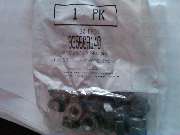
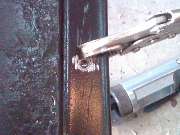
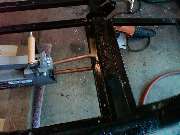
Here's the weld nuts. You can see it tells what size hole to drill. I bought the spot welder for this project. Drill the hole and clamp the weld nut in place. Use a grinder to remove the rough edges underneath and to give a clean weldable surface. I made a platform on the dolly for the welder to sit on.
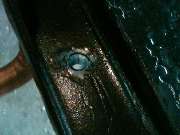
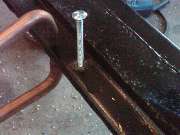
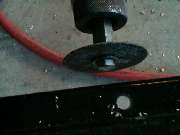
For a low power spot welder you can make three spot welds directly over the projections on the weld nut. A stronger spot welder could make the triple spot weld in one shot. That's what it looks like. Use a long bolt to wiggle the nut. If it breaks, do it over again. A right angle grinder with a small wheel does the trick for the grinding.
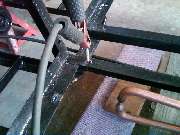

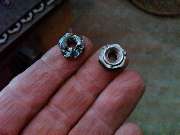
The spot welder tongs did not fit inside the heavy frame channel, so I MIG it up. A blow hole just says for me to MIG weld the hole's. If you screw it up this is what it looks like. Just do it again.
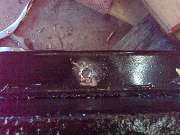
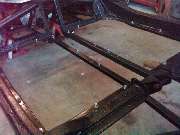
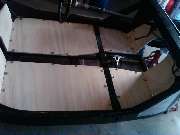
Done with the main floor boards. I need to think about how I can make a more uniform clamping jig just for the spot welder.
|